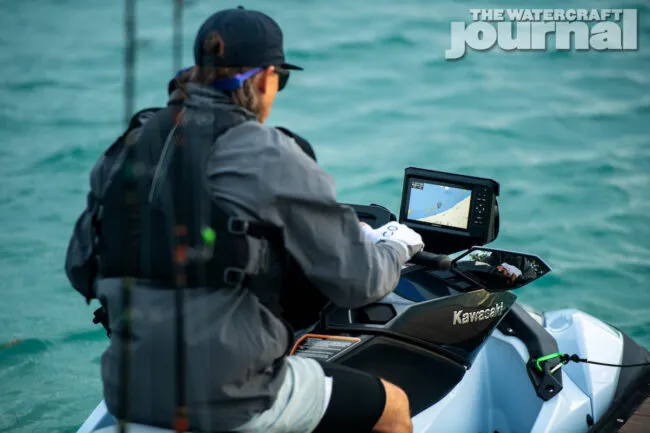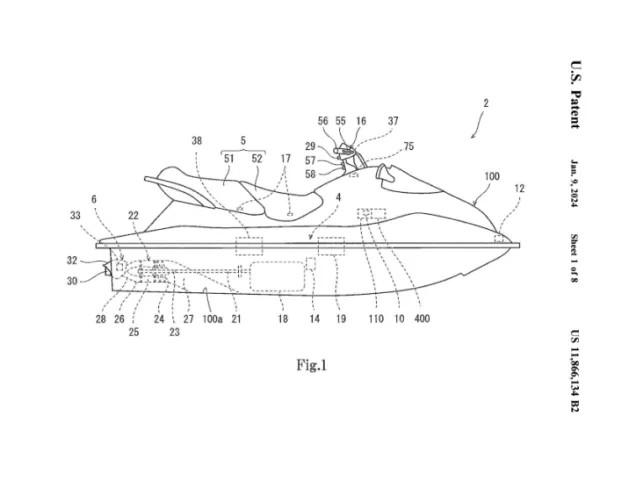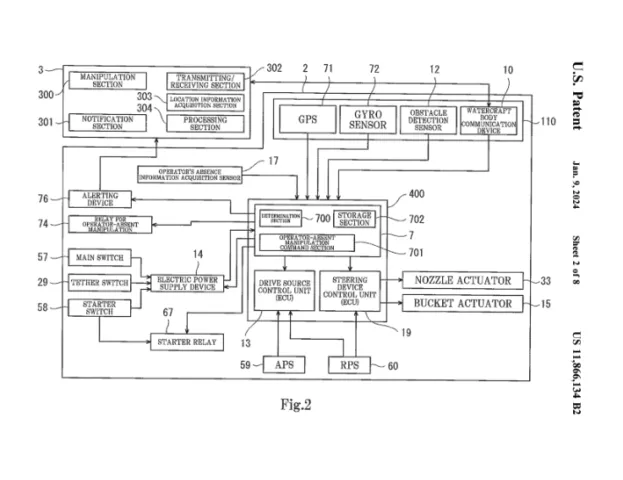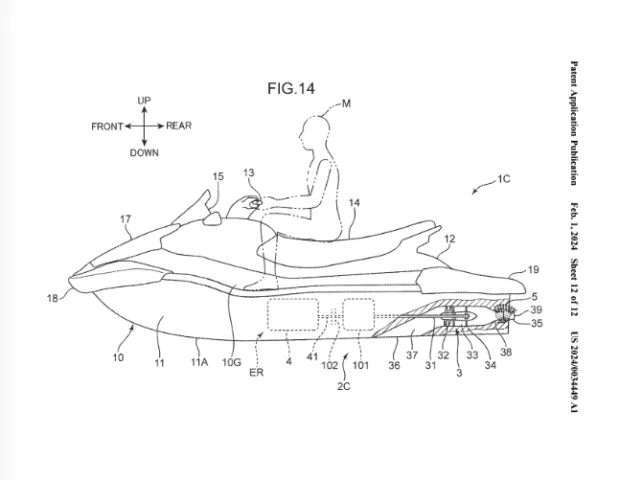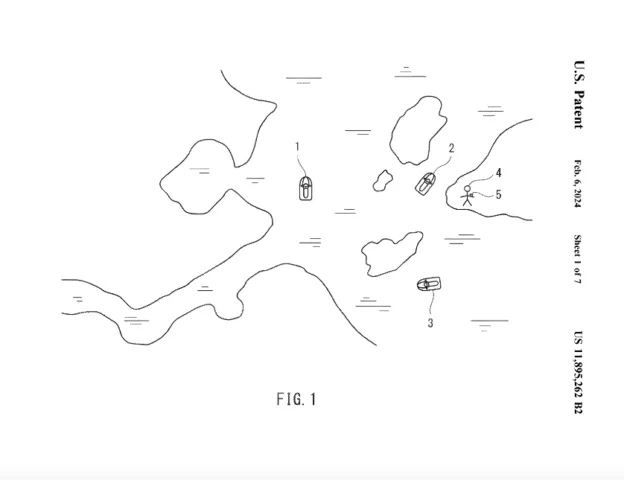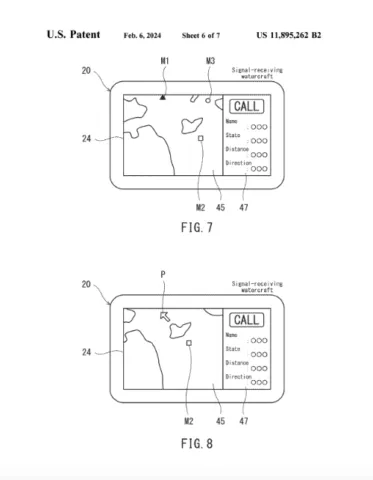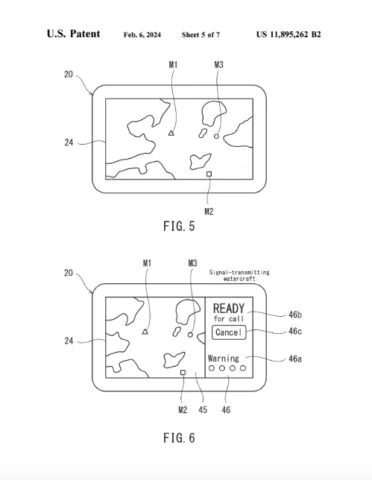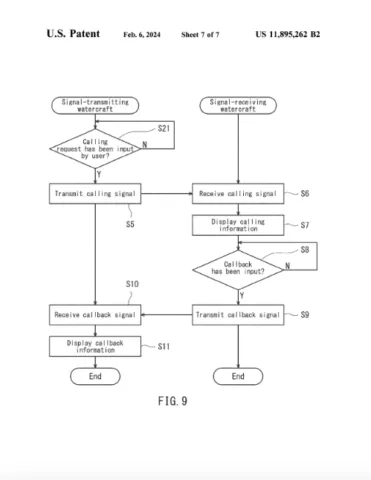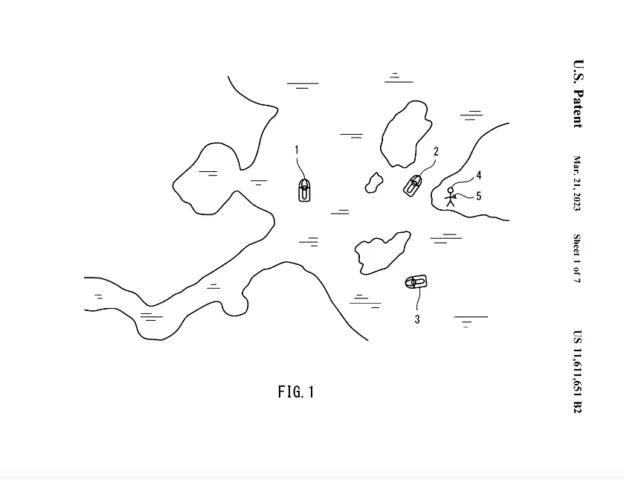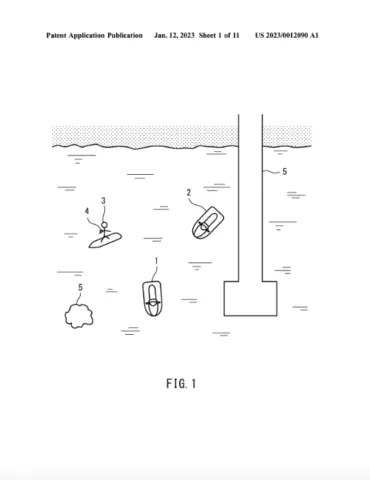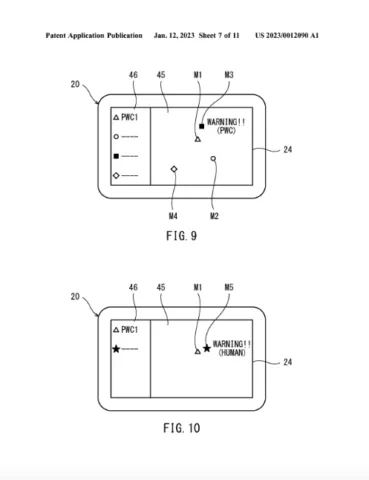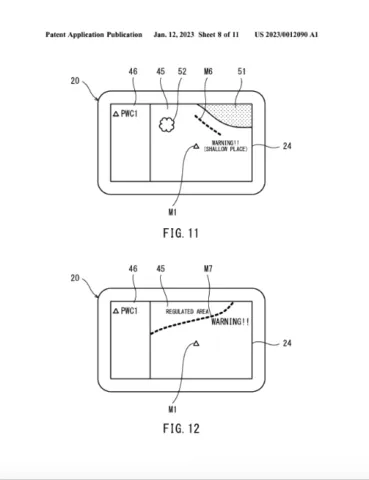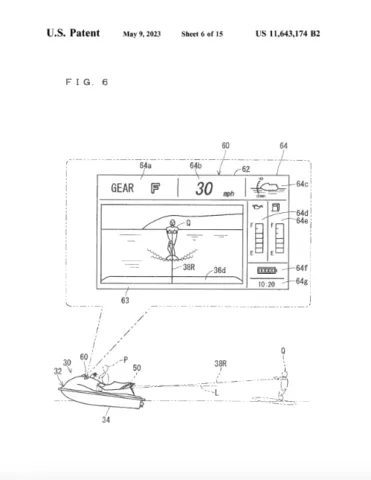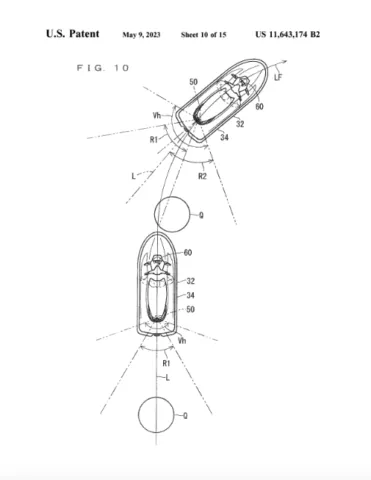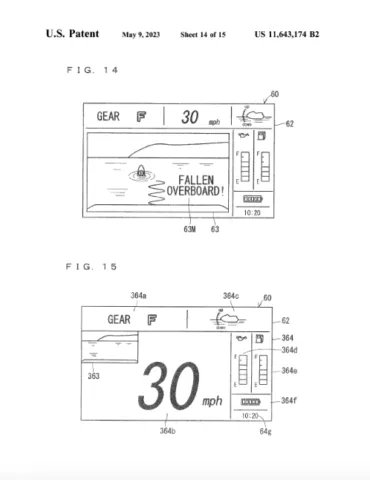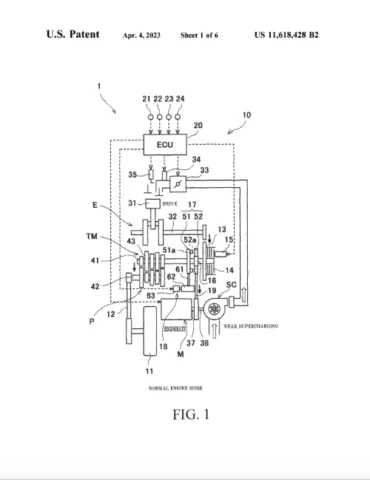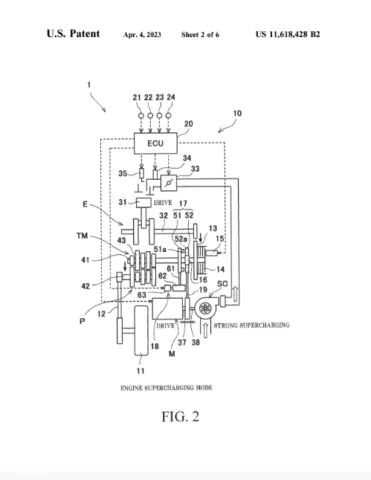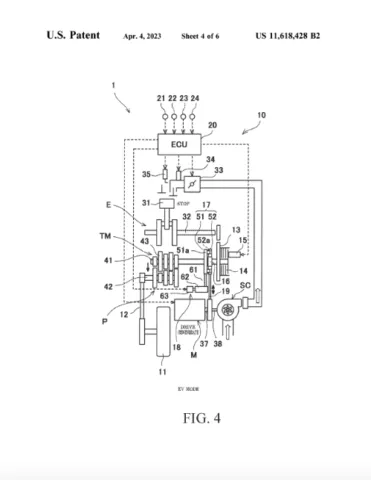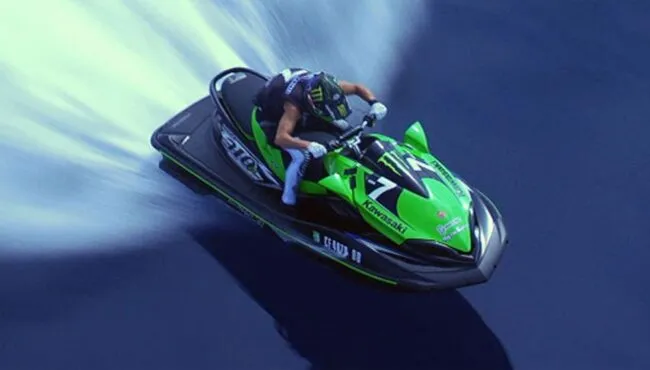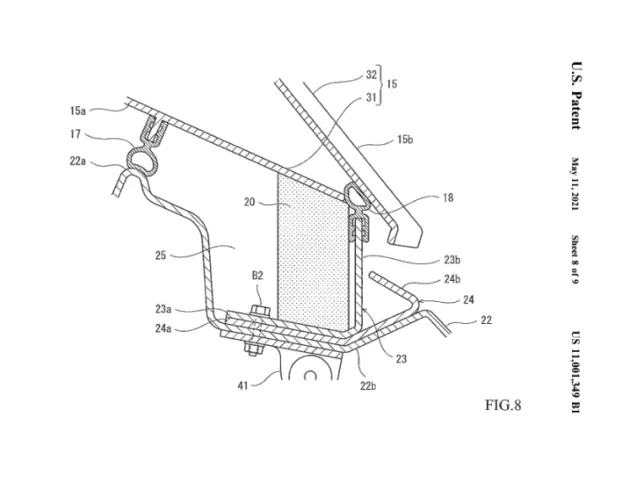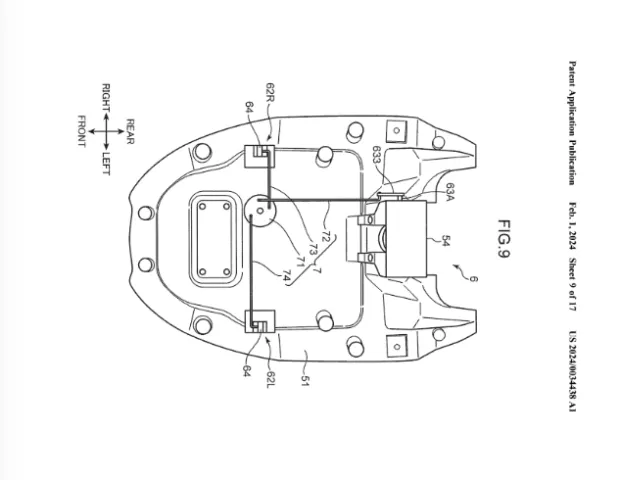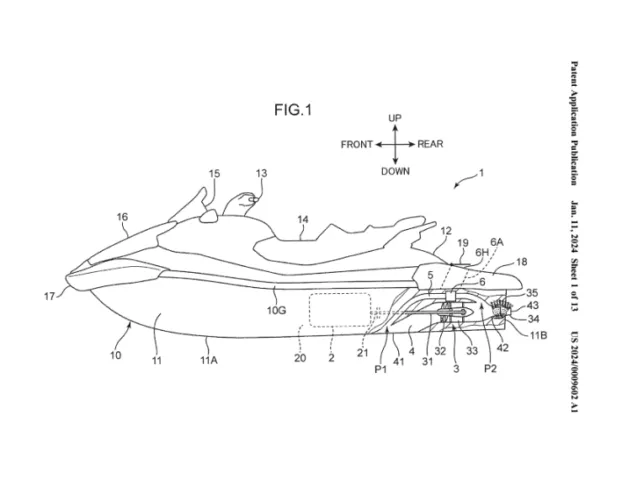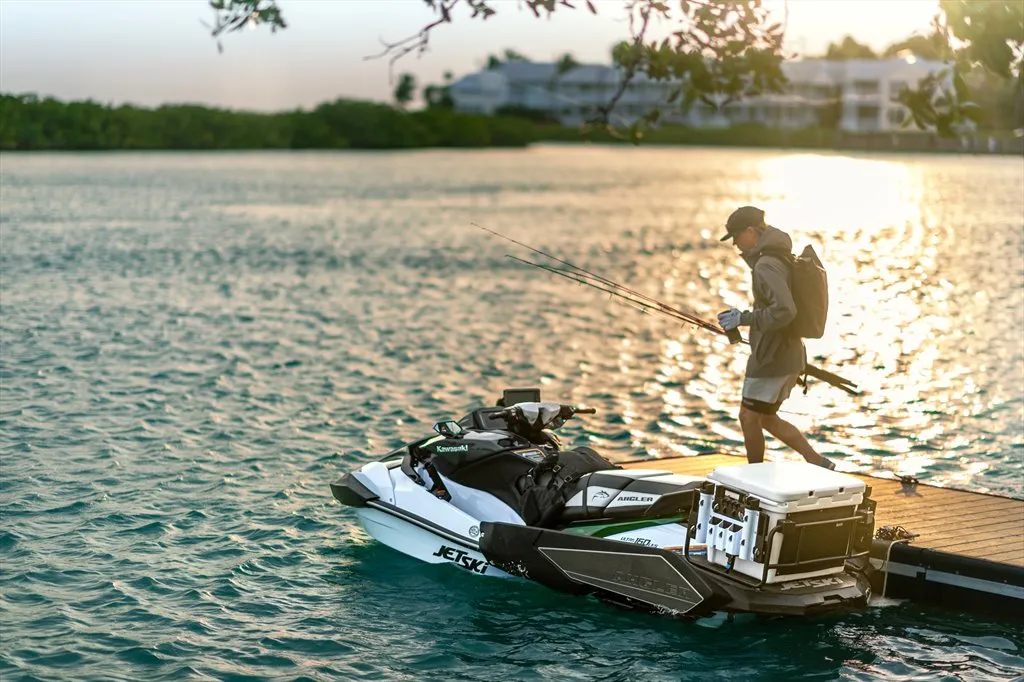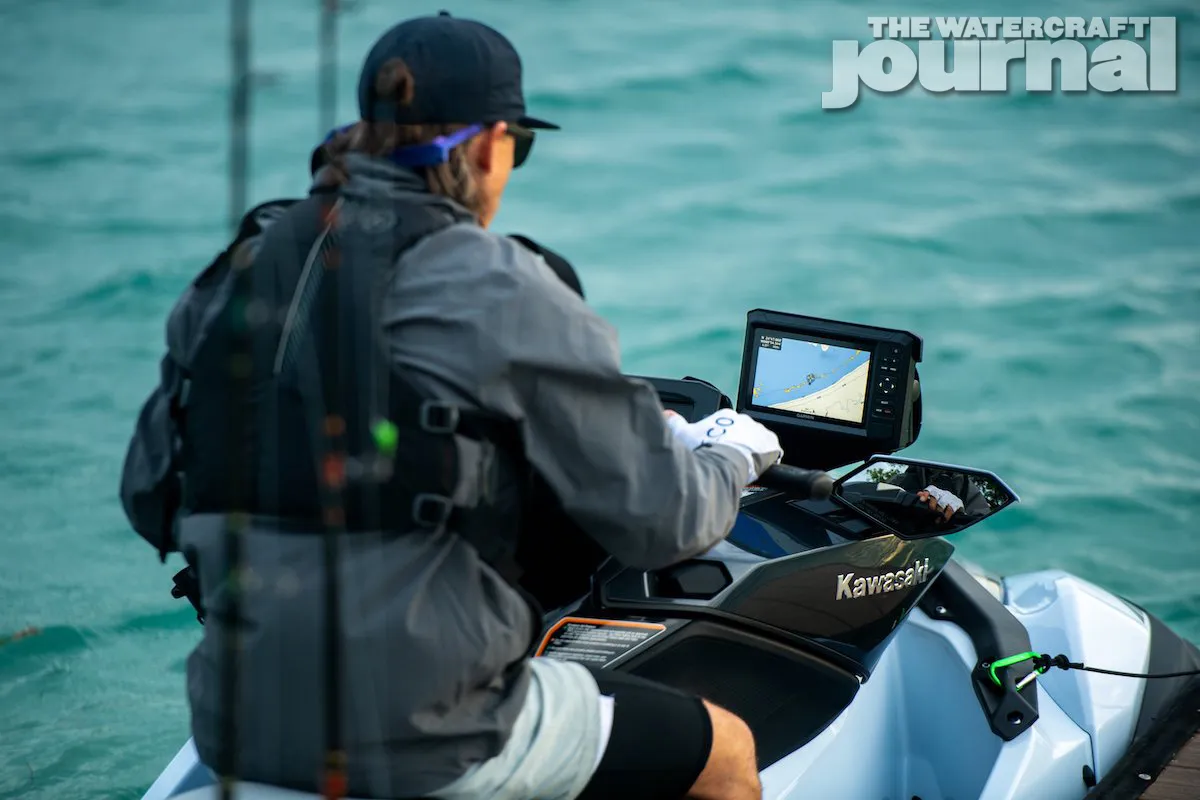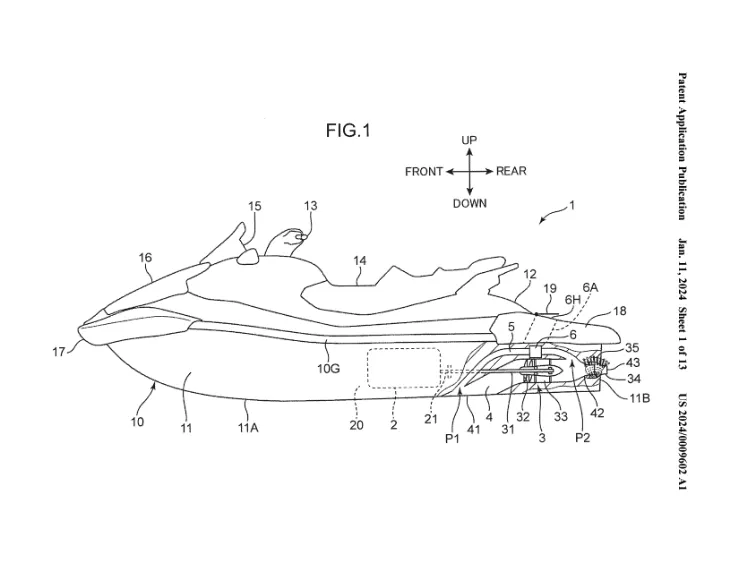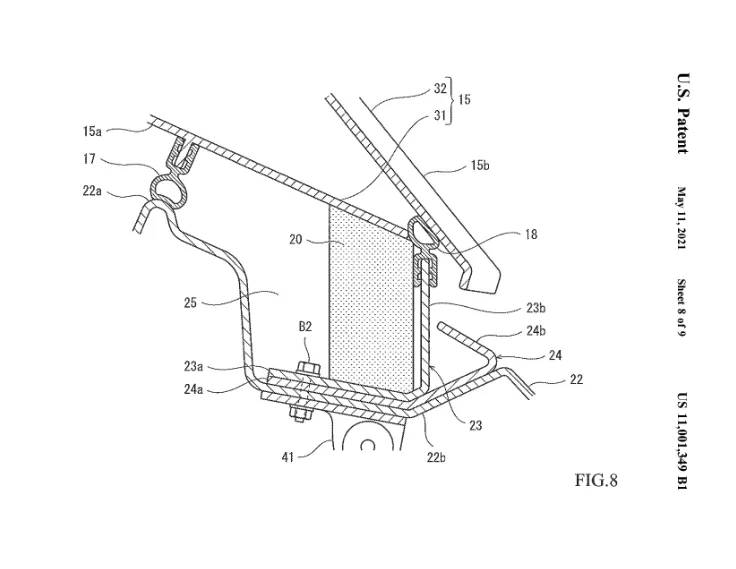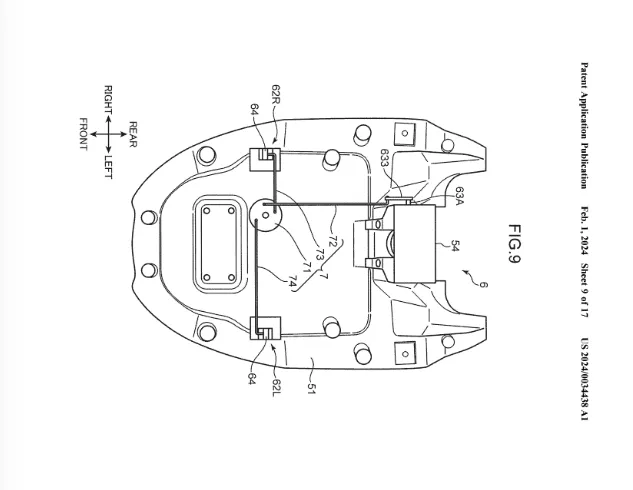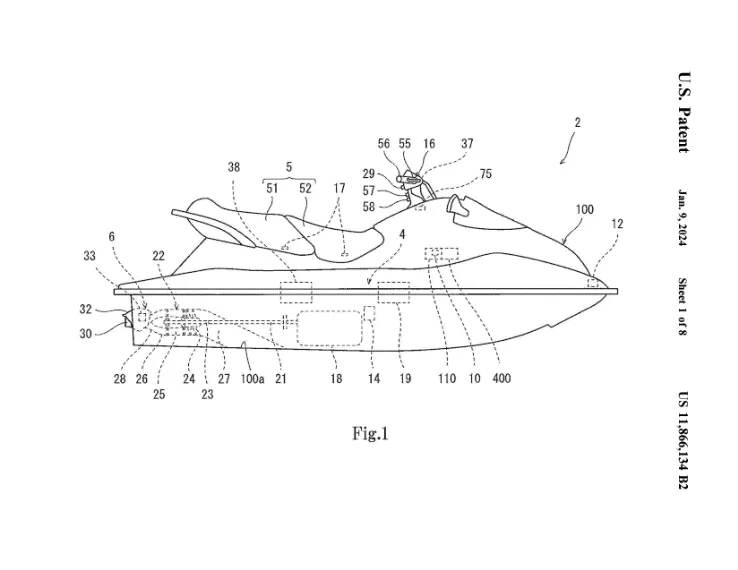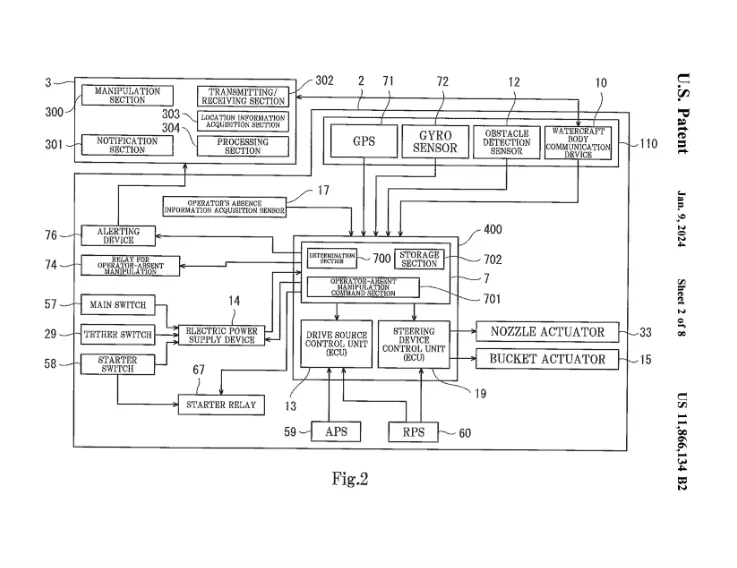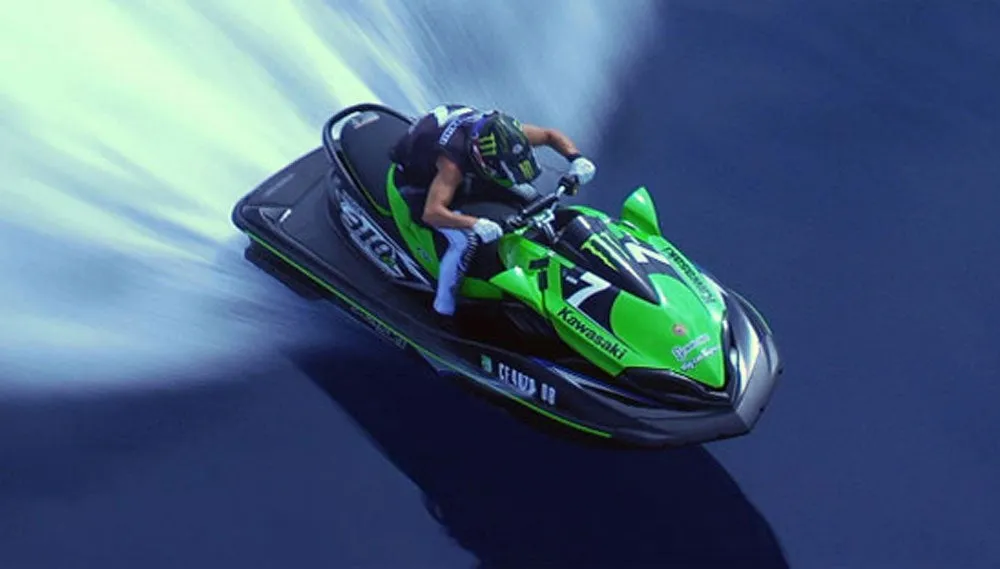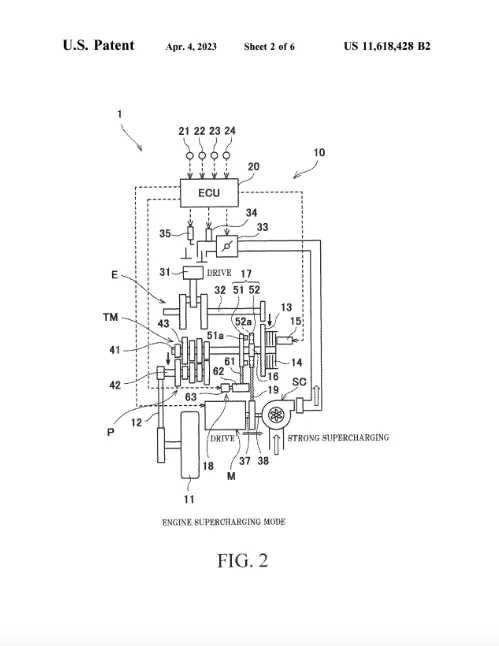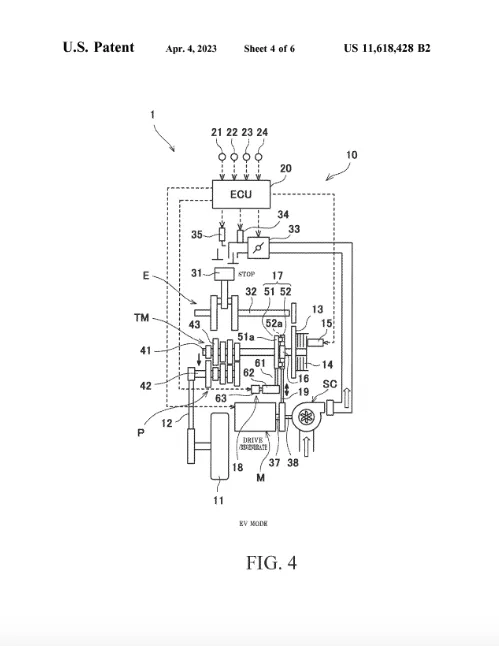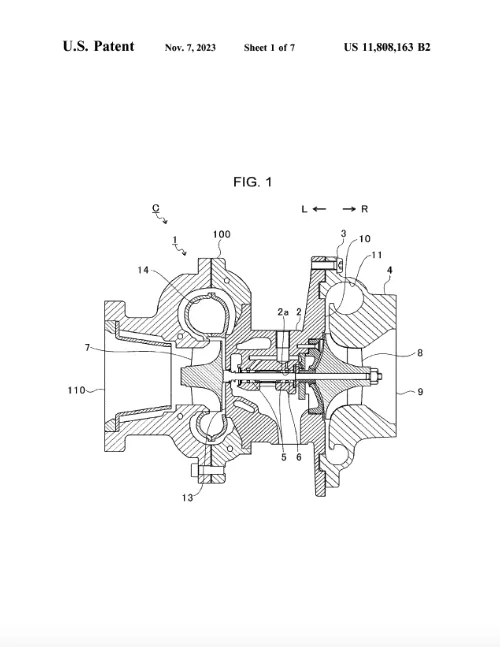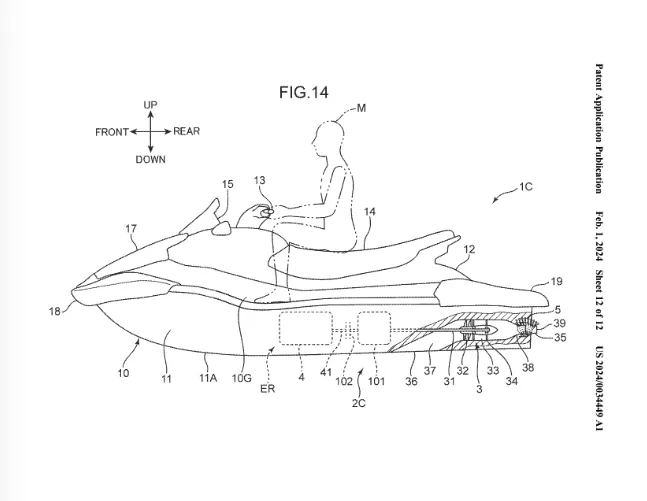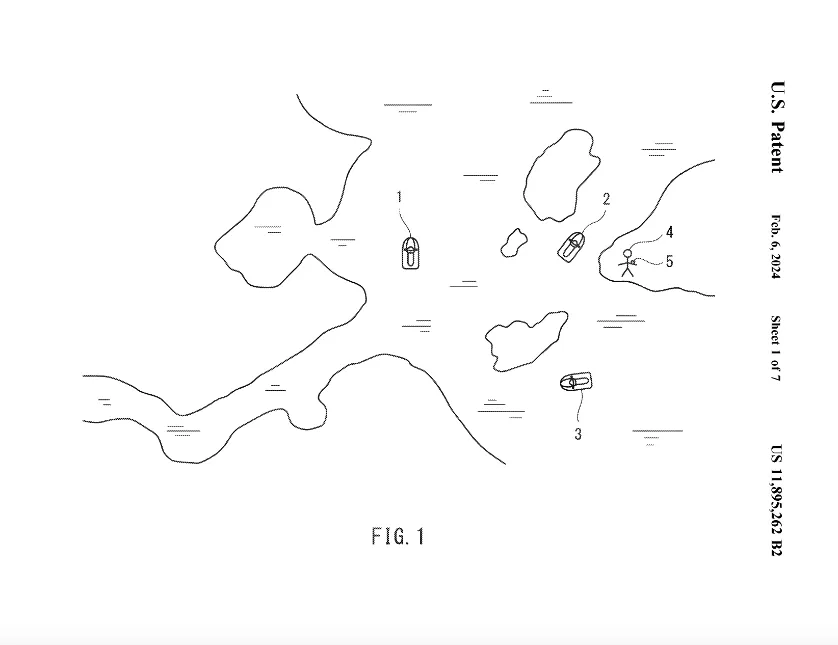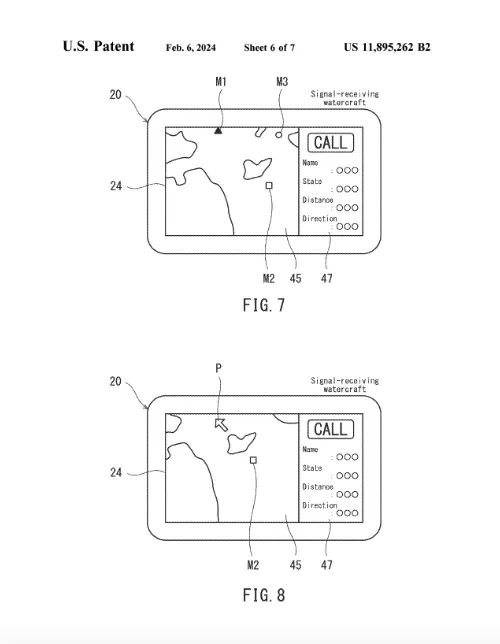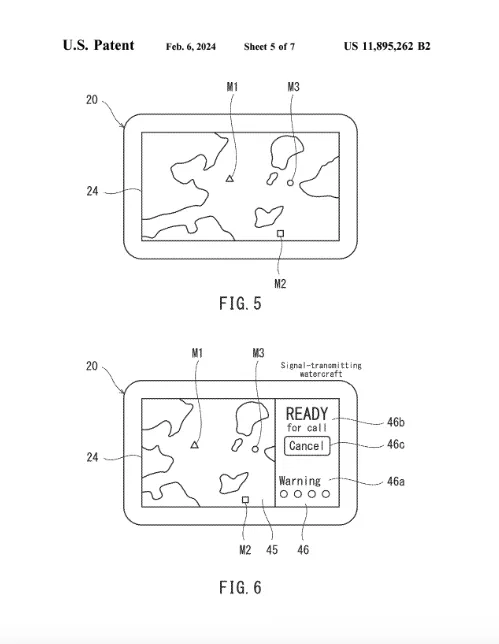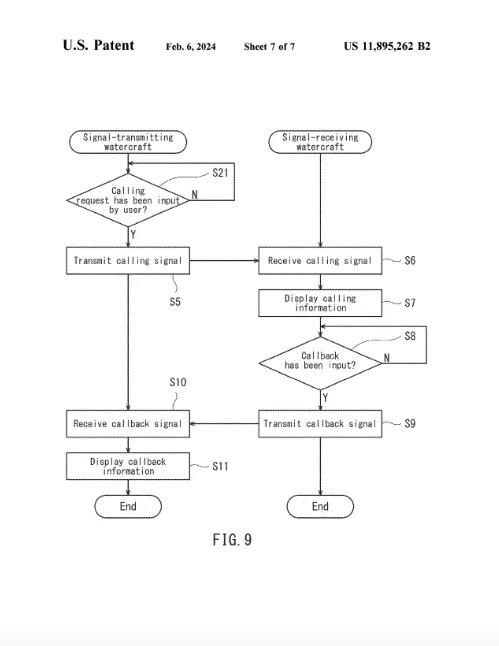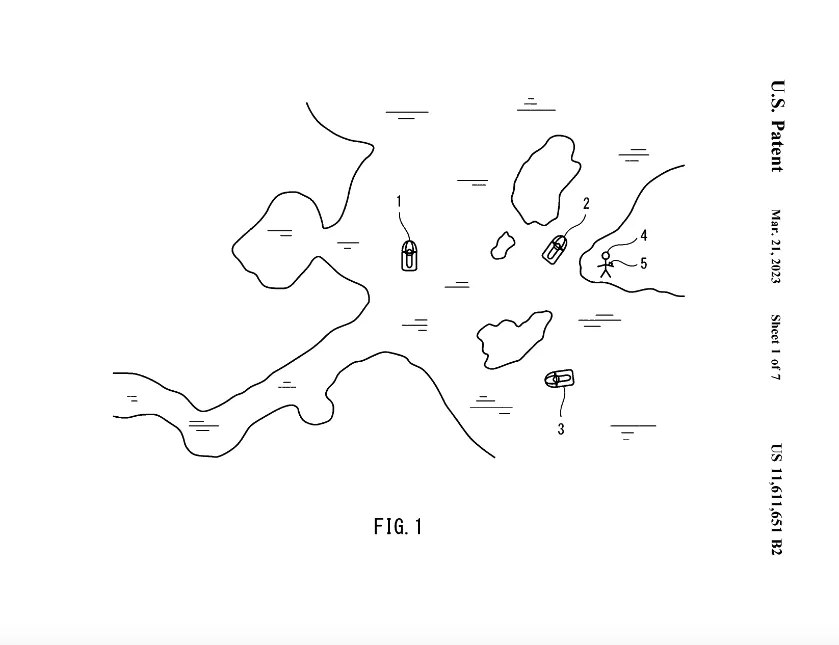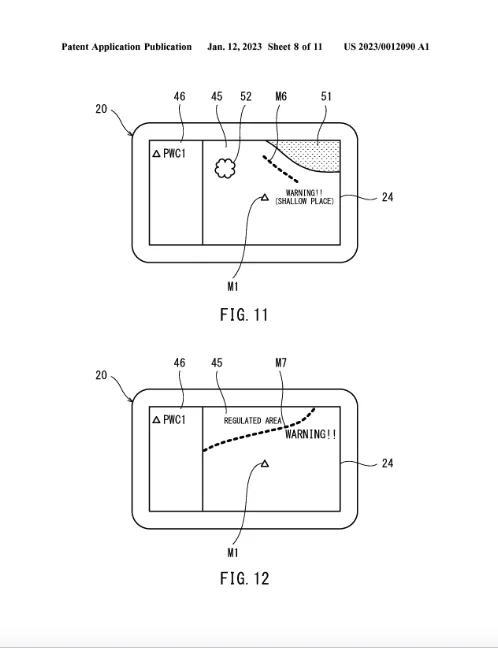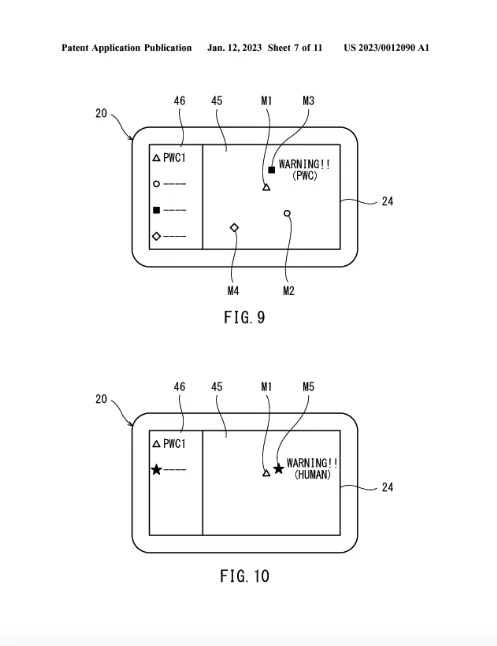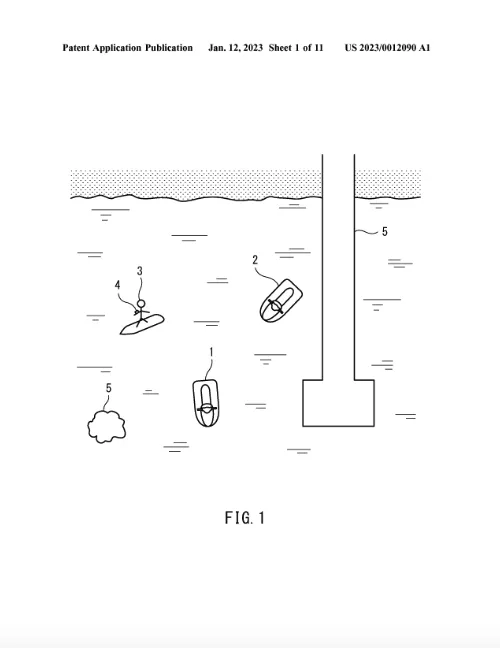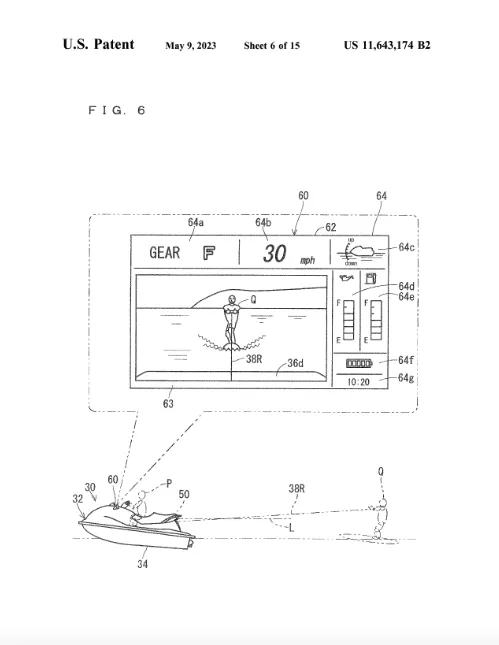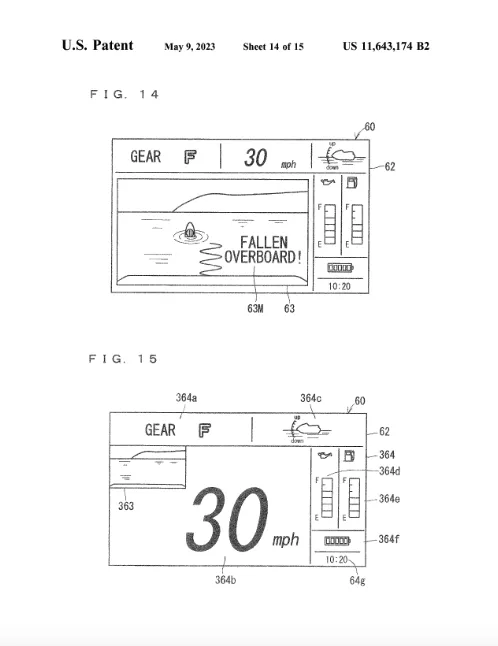It’s been a good while since The Watercraft Journal has published an episode of “Vicious Rumors & Vile Gossip” and that’s because frankly, we haven’t encountered much in the way of verifiable leaked info. But not so when it came to future Kawasaki JetSkis. We’ve been pretty spot-on for Team Green over the years:
In 2019, we reported on a new patent for a folding rear seat that would lock in place and cover a deep rear storage pocket. This manifested as the redesigned 2020 STX 160 models. In 2021, WCJ reported on proposed redesigns of the Ultra JetSkis. That exact model debuted a year later.
So when WCJ discovered that Kawasaki’s legal department had filed not one, not two but 22 patents for new designs, innovations and technologies for future JetSkis, we were floored. The first 8 patents, which are all hyperlinked in the text below and can be downloaded for better viewing, all pertain to features and designs on existing JetSkis.
These include: the 3-way adjustable seat design, the gullwing doors, the multimount handlebars and rear storage track system exclusive to the Ultra Deck, the Jetsounds 4S stereo system, LED running lights being incorporated into the front bumper, and the overall aesthetic of both the redesigned Ultra and STX JetSkis, respectively.
Geo-Locating, Quick Retrieval & a Digital Anchor
Within the document labeled US 11866134 B2 we get details how the watercraft can be operated without a rider by using a low-speed battery-powered electric drive-and-control system [a secondary propulsion system to the internal combustion engine –Ed.]. Yes, you read that right, Kawasaki’s working on a self-driving JetSki.
Imagine you’ve stopped at a sand bar. The tide comes in and the ski begins to drift away before you catch it. Suddenly, a signal alerts a secondary ECU within the ski to ignite a battery-powered drive system (US 2023/0097457 A1). The pump silently whirls to life and servos manipulate the nozzle cable, directing the ski back to its original location.
Patent US 2024/0034449 A1 is the first of three “Calling System” patents; a geo-locator that first identifies the JetSki on a GPS (global positioning system) grid; secondly, marks its current location on the grid and maps a path back to its previously marked location (where you last parked on the sand bar, in this example) carefully avoiding marked obstacles.
The second of three “Calling System” patents – titled US 11895262 B2 – allows this new system to not only identify its position as well as calculate the rate of speed wherein it traveled from the last pinned location (allowing it to evaluate whether the ski drifted away or the rider fell off at speed) but it also can communicate with other similarly-equipped skis.
This slow-speed operation “retrieval system” has a secondary function, that of driver retrieval. The secondary ECU – patent US 11611651 B2 – will recognize the specific parameters common to a rider falling off and will engage the electric drive to return to the last GPS marker where the lanyard was removed, bringing itself back closer to the ejected rider.
Additionally, this ability for the JetSki to maintain itself near silently through a GPS-controlled electric drive system permits the “Calling System” to serve as a digital anchor. So rather than weighing an anchor overboard, a fisherman can engage the GPS locator by removing his rod from a special rod holder – indicating that he is wanting to remain stationary – and allow the electric drive to keep you steady for hours.
Collision Avoidance & Tracking
The above systems hinge upon the watercraft’s GPS signature, which all current Ultra JetSkis currently have (via its GPS-tracked speedometer). As part of the aforementioned patent, US 11895262 B2 a companion patent – US 2023/0012090 A1 – not only alerts the rider to possible collisions with stationary objects but other watercraft in motion as well.
Communicated through the TFT digital dashboard already on current Ultras, a full-color GPS aerial image will identify your JetSki, the local topography, marinas, etc. as well as other vessels – providing alerts if the GPS tracks vessels approaching at high speeds as well as periphery warnings for nearby obstacles [think blind spot alerts on modern cars –Ed.]
As much as the current TFT dashboard is designed to operate in this sphere, so is your rearward-facing camera: patent US 11643174 B2 details that all rearward-facing cameras are operating at a fraction of their capacity. These cameras will feed vital footage to the image processing software in a standalone CPU that will calculate your JetSki’s location in relation to obstacles and other watercraft.
Equally, the camera when used for towing skiers or towables also has the capacity to alert the driver (through the TFT dashboard) when your skier or raft passengers have “detached,” displaying an “overboard!” notification on the screen. Using the previous GPS marking software, it will also pin the last location of the fallen passenger for quick retrieval.
Of course, with this degree of GPS-tracking the Kawasaki’s TFT dashboard will now be able to provide some of the most detailed travel history data. Whether linked through your mobile device’s Bluetooth connectivity or a nearby WiFi signal, the CPU’s communication interface will be able to store terabytes of storage through internet connectivity.
Outlined in patent US 2023/0029055 A1 the new tracking capabilities will monitor GPS routes via a series of digital breadcrumbs, correlating in vehicle speed, throttle position, fuel consumption and several other factors that will equip you “long hauler” riders with some of the best data gathering available on a personal watercraft.
Water-Cooled Turbos & Electric Superchargers
If all of this high tech wizardry didn’t get you excited maybe this will: Kawasaki is developing its own double-walled, liquid-cooled turbocharger. The single-greatest hurdle for OE’s offering a turbocharged performance watercraft was heat mitigation. Turbos and their circuitous plumbing raise engine compartment temperatures far worse than superchargers.
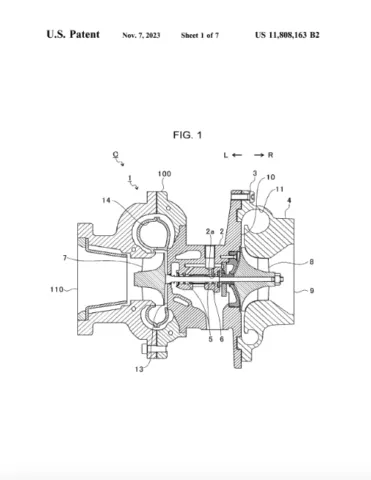 By developing a water-jacketed turbocharger and plumbing system as outlined in patent US 11808163 B2, the cast aluminum inner housing can be enshrouded in either a second cast aluminum case or cast steel (although the patent does not restrict what materials can or will be used). This will also keep intake charges cooler and mitigate heat soak over long durations.
By developing a water-jacketed turbocharger and plumbing system as outlined in patent US 11808163 B2, the cast aluminum inner housing can be enshrouded in either a second cast aluminum case or cast steel (although the patent does not restrict what materials can or will be used). This will also keep intake charges cooler and mitigate heat soak over long durations.
More intriguing than Kawasaki’s new marinized turbocharger is its electrically-driven supercharger. Filed as patent US 11618428 B2, the design details a method wherein the supercharger can be driven by the combustion engine, then via an electric clutch, disengaged from the mechanical drive, and when commanded, driven by an electric motor.
This would free up the combustion engine to operate at greater efficiency as the electric motor driving the supercharger would eliminate all parasitic loss or driving the supercharger.
Moreover, the electric motor can spin the supercharger at a greater RPM than what the internal combustion engine can spin, radically increasing boost, and thereby, horsepower.
Offshore racers have been employing aftermarket turbocharging systems for over a dozen years with tremendous success: both in performance as well as fuel efficiency and engine longevity. Equally, being able to free up the current internal combustion engine of parasitic loss (drag) and spinning the supercharger up above normal boost speeds all point at incredible power outputs from even the existing 1.5-liter 1,498cc 4-cylinder engine.
While there is zero indication of this within the leaked documents, the implication of a potential compound supercharged induction system is undeniable. An aftermarket tuner employing portions of both forced-induction systems presented above – a water-cooled turbo multiplying the compressed atmosphere generated by the electrically-driven supercharger – yields the potential of producing literally 1,000’s of horsepower with stock components.
Better Cooling & Improved Storage
In the final documents, we’re shown a a pair of revisions to the existing STX front storage compartment: namely a water-tight membrane (seal) that keeps the hood from leaking under heavy water conditions (patent US 11001349 B1); a new three-point locking mechanism that secures the front storage lid far more firmly (patent US 2024/0034438 A1); and a electronic locking mechanism that secures the storage latches until released via the dashboard or key fob (patent US 11845518 B2) for all Kawasaki JetSkis.
The final patent – US 2024/0009602 A1 – offers four different designs for an improved ambient water induction system to improve engine and exhaust cooling. These new inlets – infused into the hull surface itself or through inlets molded into the pump tunnel – draw in water quicker and process them through the engine and exhaust more efficiently, passing through dual mesh strainers and finally, out through the pump itself or the transom.
Conclusions
Typically, when The Watercraft Journal has received leaks like these its taken between 1-to-3 years to come to fruition in a production vehicle. Yet, many of the levels of technology being proposed in these documents seem well beyond what is seen in the powersports market currently.
Certain items like the STX hood latch, water intrusion seal, revised water-cooling ports and turbo forced-induction system all appear like “low hanging fruit” that could be quickly introduced. The self-driving “Calling System”, digital anchor and rider retrieval features are phenomenal and certainly would change the safety standards of the PWC industry.
Equally, so would collision avoidance, electric security locks, and the tow sports camera that alerts the driver of a fallen rider could radically change the public’s perception of how safe these machines are. It’s all very exciting stuff for sure – and rarely do we find patents that go unused.






